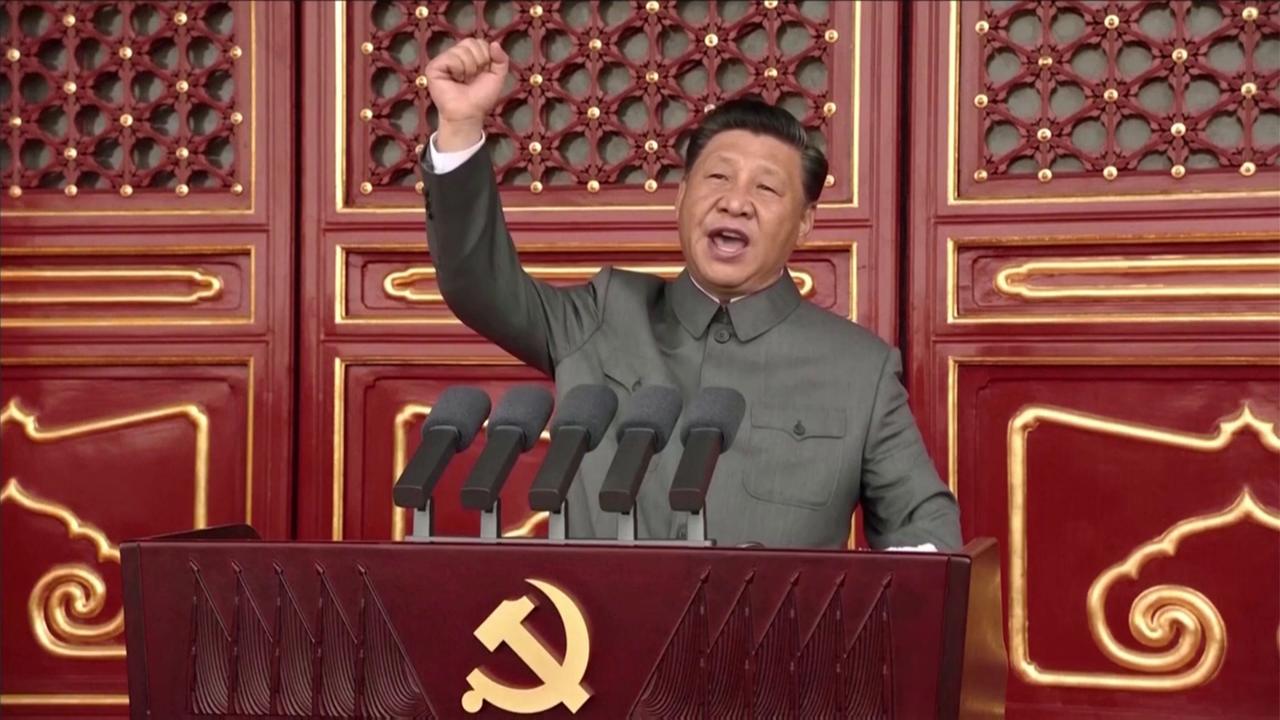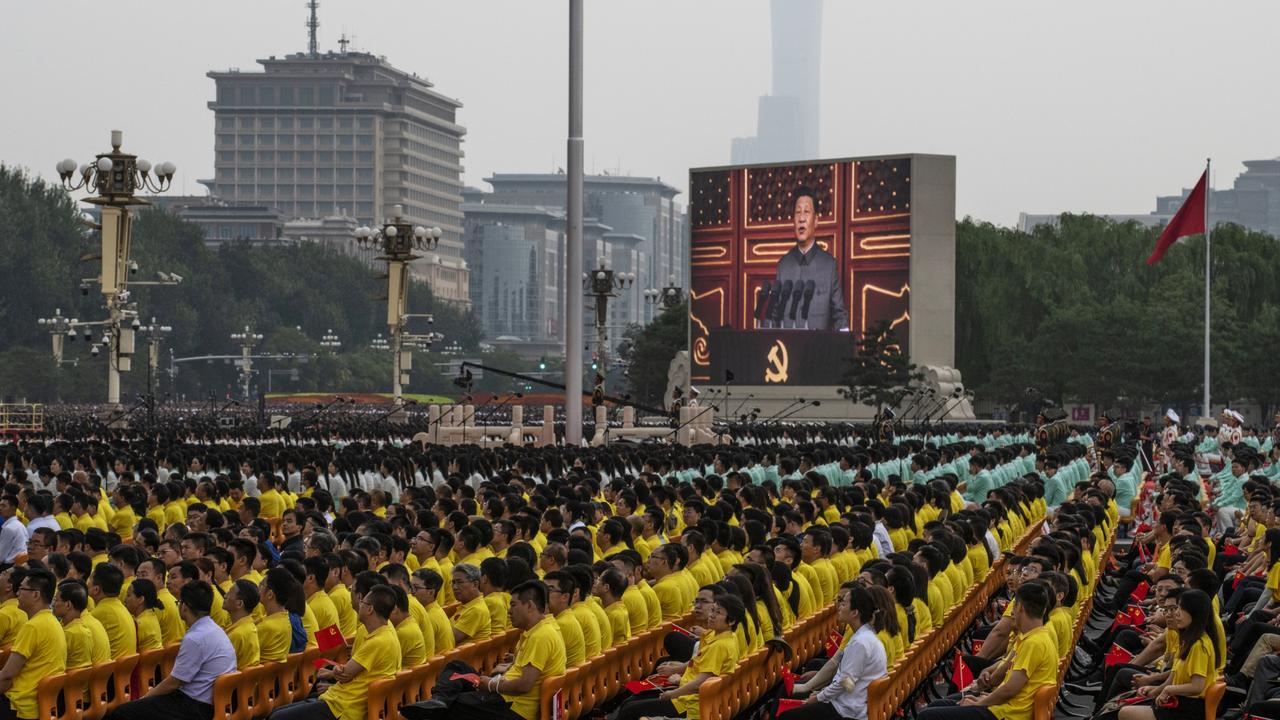- Joined
- Sep 22, 2008
- Messages
- 80,572
- Points
- 113
China started first shot.
 Joe Hildebrand
Joe Hildebrand



 Alexis Carey
Alexis Carey




Yea. But in doing so Australia is biting its balls.China has its knees on Australia’s neck
Really???? How come??China has its knees on Australia’s neck


 Matthew Elmas
Matthew Elmas
Wokism will destroy USACommunism may fall in China but it is gaining strength in America.
Sad but true,,,however the yanks are fighting back,,,,unlike the chicons who have huge support from the overseas chinese like singkie fuckeins chicon plps...and the biggest joke is these chicon plps are 2nd or 3rd gen singkies/mudlanders who never even step foot on Chicon land at all,,,and I thought the mudslimes were badCommunism may fall in China but it is gaining strength in America.
Go fuck yrslf.The little known prediction of China’s collapse
A few years ago an expert casually predicted that China would fall just like other communist nations had. It could be coming true.
Joe Hildebrand
3 min read
October 23, 2021 - 6:12AM
389 comments
NEWS.COM.AU1:33
Evergrande: Eerie "ghost towns" reveal scale of China's housing crisis
Some truths take a long time to reveal themselves and a great and powerful truth might just be revealing itself to the world right about now. And one man predicted it a decade ago.
We are perhaps witnessing the final flailing death throes of communism.
It has now been three decades since the fall of the Berlin Wall and Francis Fukuyama’s famous declaration of the end of history — namely that the fantastical and fatal experiment of communism had failed and that liberal democracies were, for want of a better cliche, the new normal.
But one shining aberration continued. As grey authoritarian socialist blocs fell like tenpins at the end of last century, the most populous country on earth surged towards its current status as the planet’s presumptive superpower.
Now there are ominous signs that despite all these heroic assumptions, and the championing of its rise by experts and apparatchiks alike, it too is on the brink of collapse.
China, like the wall, may fall.

There are signs China — decades after the fall of communism in Europe — is itself on the brink of collapse. Picture: Kevin Frayer/Getty Images
Should this happen there will inevitably be a chorus line of historical revisionists who will claim that circumstances changed, political situations evolved or dark forces conspired.
After all, who could have possibly foreseen this devastating crash?
As it turns out, someone did.
In a podcast for BBC History Magazine in April 2012, the economist and political scientist
James A. Robinson casually predicted that China would fall just as certainly as the Soviet Union did — despite both being lauded by the left and feared by the right.
“In the early 1980s we were still being taught that if you really wanted to have successful economic growth you needed to have a Soviet command-style economy,” he said.
“And the Soviet Union, between 1928 when Stalin started pushing these five-year plans and the next 40 years, that was probably the most successful experience of economic growth in world history.

Chinese President Xi Jinping at celebrations in Beijing to mark the 100th founding anniversary of the Chinese Communist Party on July 1. Picture: Reuters
“The Soviet Union grew incredibly fast by taking millions of people in the countryside who
were basically doing nothing except growing potatoes and doing subsistence agriculture and sticking them in factories and this created enormous improvement in income per capita and it fooled everybody.
“It fooled economics professors, it fooled the CIA, it even fooled the Soviet leadership.”
Robinson, who co-authored the exhaustive socio-economic-political tome Why Nations Fail, said — at the time, mind you — that all the commentary about China at the beginning of this decade had all the hallmarks of the same delusions.
“It wasn’t sustainable. They could only get so far with that model,” he says of the fallen
USSR.
“Now it seems sort of laughable that people ever thought the Soviet Union had a kind of model for economic success. But lots of that heavily influenced people.
“It’s very similar the way you go back 30 years and the discussion now of China exactly
mirrors the discussion of the Soviet Union.”

Robinson believes China could follow the same fate as that of the former Soviet Union. Picture: Kevin Frayer/Getty Images
Asked by his interviewer if he was saying that Chinese growth would slow and it would not become the superpower everyone predicted, Robinson simply says: “Yeah.”
Most telling, he says, is the false notion that the Chinese Communist Party has been a great manager of the economy.
“It’s interesting the misconceptions about China. People think it’s the Chinese Communist Party that’s responsible (for economic growth).
“This has happened in spite of the Chinese Communist Party not because of the Chinese Communist Party. The economic growth in China has been caused by the Chinese Communist Party withdrawing from controlling every aspect of economic life.
“The first thing they did in 1978 was introduce incentives in agriculture. They sort of allowed people to start doing what they want and keep the income they got from doing what they want. And that led to enormous productivity in agriculture. And the same thing started happening with industry, they started relaxing controls.

Wuhan university students honour 100 years of the Communist Party at an event in September, 2021. Picture: STR / AFP
“This is not a triumph of the Communist Party, this is the Communist Party pulling itself out of society a little bit.”
Indeed. And now China is potentially on the brink of an economic crash because of CCP attempts to artificially prop up the property market.
In fact the problem runs even deeper, straight to the core of what it means to be a liberal democracy. If people are not free or politically empowered, Robinson says, it is impossible to harness their full economic potential and therefore states that do not allow their citizens freedom will inevitably fail. Those that rely on forced labour especially so.
“What makes a society prosperous is whether or not it’s organised to harness the talents of its people,” he says.
More Coverage
New pictures reveal scale of China crisis‘Doomsday’: China’s threat to tiny country
“The talents, the energies, the ideas, the creativity of its people.”
It is a concept so simple, so commonsense, that any working man or woman would understand it instinctively. If only our intelligentsia were also so wise
Go fuck yrslf... cheapsake paid by CIA
It may seems like communism but capitalist ideals too entrenched. The most the socialist can do is to tax the rich disproportionately higher.Communism may fall in China but it is gaining strength in America.
